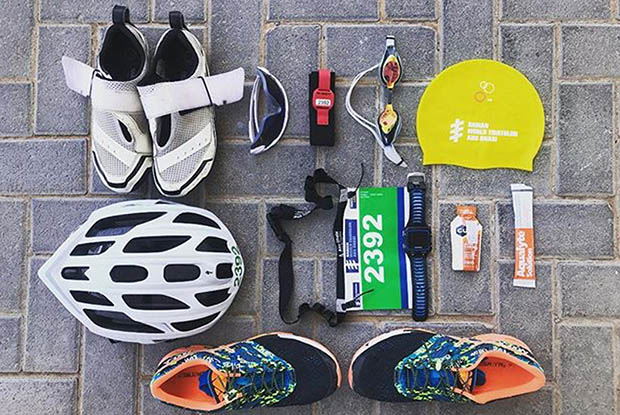
Photo/Joie Arevalo
Most triathletes know what it takes to prepare for a race in the days, weeks and months leading up to a race. But there's nothing wrong with taking preparedness to the next level and ensuring you're ready for every possible scenario on race day as well.
Pack It In
You know those photos on Instagram of people's gear all laid out on their bed the night before a race? Not only does it make for a great post on your timeline, but it also serves as a visual race day checklist and a great way to ensure you have everything you'll need for race day.
Charge Your Batteries
Bring your device's charging cables with you. If you find the batteries for your power meter , wearable GPS bike computer or even your Di2 controls are dead when you get to the race, you can always plug it into your car's charging port to get enough juice to get you through your race.
Test Your Gear
If you haven't raced in a while, don't wait until race day to try out your gear. Put your race tires on your race wheels and those wheels on your bike; then do a short test ride. Try your wetsuit for a few laps at the pool. Break in your new running shoes, and make sure the elastic laces are adjusted for comfort.
Don't Go Hungry
Bring extra nutrition . It's better to have a few extra calories ready than go without. Keep some extra nutrition stashed in your transition bag as well; you can leave it in there all season.
Shoe Store
Keep a pair of slightly used running shoes in your car or in your travel bag. If you have an extra pair of cycling shoes, you can do the same. This could be a life saver in the event of a snapped shoelace or broken cleat at the race venue.
Double Up
Bring an extra tri kit , even if it's not as fast as your race day suit. If you experience a wardrobe malfunction—a zipper failure or a drawstring snap—you can quickly change and still be able to race. The same goes for goggles: extras are inexpensive and could save your day.
Stay On Course
If you can drive—or better yet, ride—the tri bike course before your race, do it! You'll not only familiarize yourself with any turns and hills, but you can also check out road hazards like potholes and the like.
The same goes for the run course: Review it to understand any gradient changes or peculiarities in the road that you may want to avoid on race day.
READ THIS NEXT: Race Day Nutrition Mistakes


